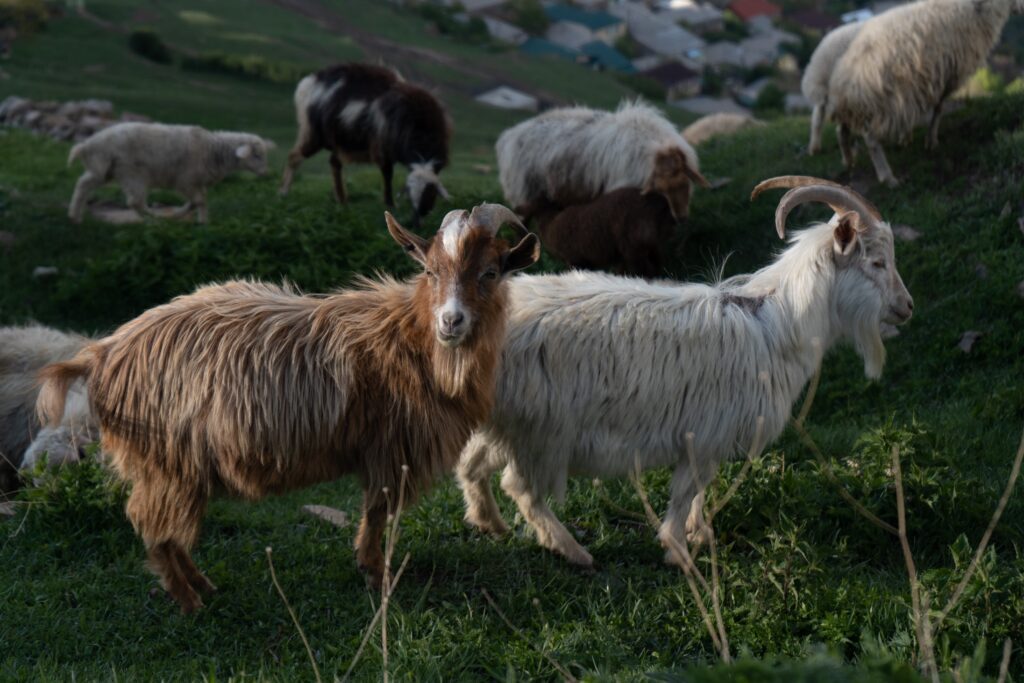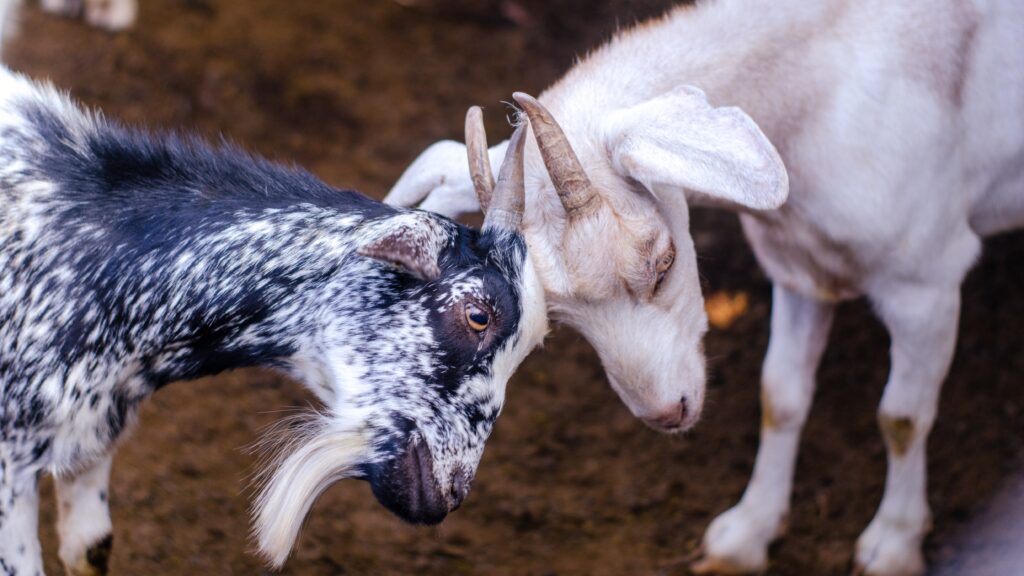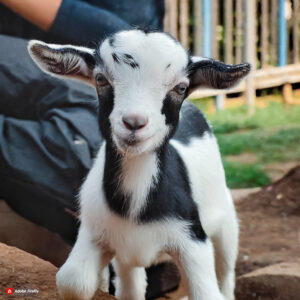Did you know that goats can have long, pointed horns, none at all, or neither? Continue reading for all of your goat horn-related questions, including why some goats have horns while others do not. In any case, why do goats have horns?
There are two purposes for goat horns:
Table of Contents
ToggleCommunication
Horns are a means of communication for goats. A joyful, amiable goat might offer you a playful headbutt to start a game with you. Young bucks (male goats) may also headbutt one another in a territorial or dominance-establishing struggle. It’s pretty useful for protection to always have a pair of pointed spears on your head!
Air-Conditioning
Goats, however, also use their horns for thermoregulation; in hot weather, the horns help keep their bodies cool. Blood flows through the many blood arteries in the horns as it is pushed through the goat’s body (source). The blood cools off and flows to the goat’s body at a low temp because the horns are exposed to the air rather than being coated in layers of fat and fur. Really nice, no? It resembles a built-in air conditioning unit almost exactly!
All goats have horns, right?

It’s a frequent myth that only male goats have horns, not females. All goat breeds have horns, male and female, as a fun fact about goats. So what is happening here?
A goat without horns could have had his horn buds cut off when he was a baby, thereby preventing the growth of his horns.
He could also be a polled goat who was born with a recessive trait that prevents him from ever developing any horns. The removal of a goat’s horns as an adult is exceptionally rare; disbudding is advised instead.
Why are a goat’s horns cut off?
Horns may be quite a nuisance, so most goat caretakers prefer hornless goats. An unruly goat may inflict considerable harm to its human handlers, property, or even other goats. For this reason, dairy goats are practically never horned. Try milking a grumpy goat with a pair of pointed horns!
Are horns common in female goats?

Goats have horns on their heads, male and female. Typically, a female’s horns are a little bit shorter and thinner than a male’s. It is untrue that goats with horns are always female.
The breed of goat depends on the shape of the horns, which can be straight, curved, or corkscrew-shaped. The pygmy goat is an illustration of a goat breed having straight horns. Boer goats and Nubian goats are two goat breeds with curved horns. On the other side, the Markhor and Girgentana breeds have enormous corkscrew horns.
A Comparison between Male and Female Goats

Looking behind the tail is the best method for distinguishing between a male and a female goat. Male and female goats both have anuses, which is why a male goat has a single hole under his tail. Females, however, have an additional hole below the first. The vagina, which is utilized for both mating and childbirth, is this. Male goats who have not been castrated also have scrotums, but females have udders.
In general, male goats of all breeds are larger, heavier, and have greater horns than females. Although female goats often sport goates, they also frequently have longer beards.
How do you cut off a goat’s horns?
A goat’s horns can be removed or prevented from growing in a number of ways:
Disbudding
The practice of disbudding a baby goat is both very popular and somewhat debatable. Baby goats have “horn buds” (also known as horn buttons) on their heads, which are hard, under-the-skin knobs from which two sharp horns will ultimately sprout.
Although the actual disbudding of a goat is unpleasant, many goat caretakers feel it is essential for the animal’s general safety and well-being.
The horn buds of baby goats are burned, removed, and cauterized while they are safely confined inside a small open box. The goat should be between 4 and 10 days old at the time of this procedure, dependent on how soon the horns start to develop.
While the process is somewhat distressing for the baby goat, the discomfort it suffers can be significantly reduced by a quick and skilled hand. the positive news With the right aftercare, young goats typically make a full recovery and resume their normal, content lives.
Dehorned
Although the words “dehorning” and “de-budding/disbudding” are occasionally used interchangeably, they refer to different processes. Disbudding is performed when the goat is quite young, and if done correctly, it has no long-term negative effects. Most children soon recover and don’t even notice losing their horns.
The goat is really dehorned when it is older and the horns have totally or partially grown in. Only a competent veterinarian should perform it because it can be harmful.
Goat horns can be made safe in what ways?
There are ways to make goats safer for goat owners who want to retain their goats’ horns. Some owners create their own horn guards from tennis balls or pool noodles. Available commercial rubber guards are also an option, and these work well for veterinary appointments or exhibitions.
Do all varieties of goats have horns?

Although all goat breeds officially have horns, some varieties are polled or have a greater disbudding rate. Dairy goats nearly never have horns since it’s simpler to handle them (and they are often not allowed at shows if they have horns).
Given that they are well-liked family goats, Nubian dwarfs are commonly kept without horns. Horns are almost universally available on angora goats, which helps them stay cool in hot weather.
References







